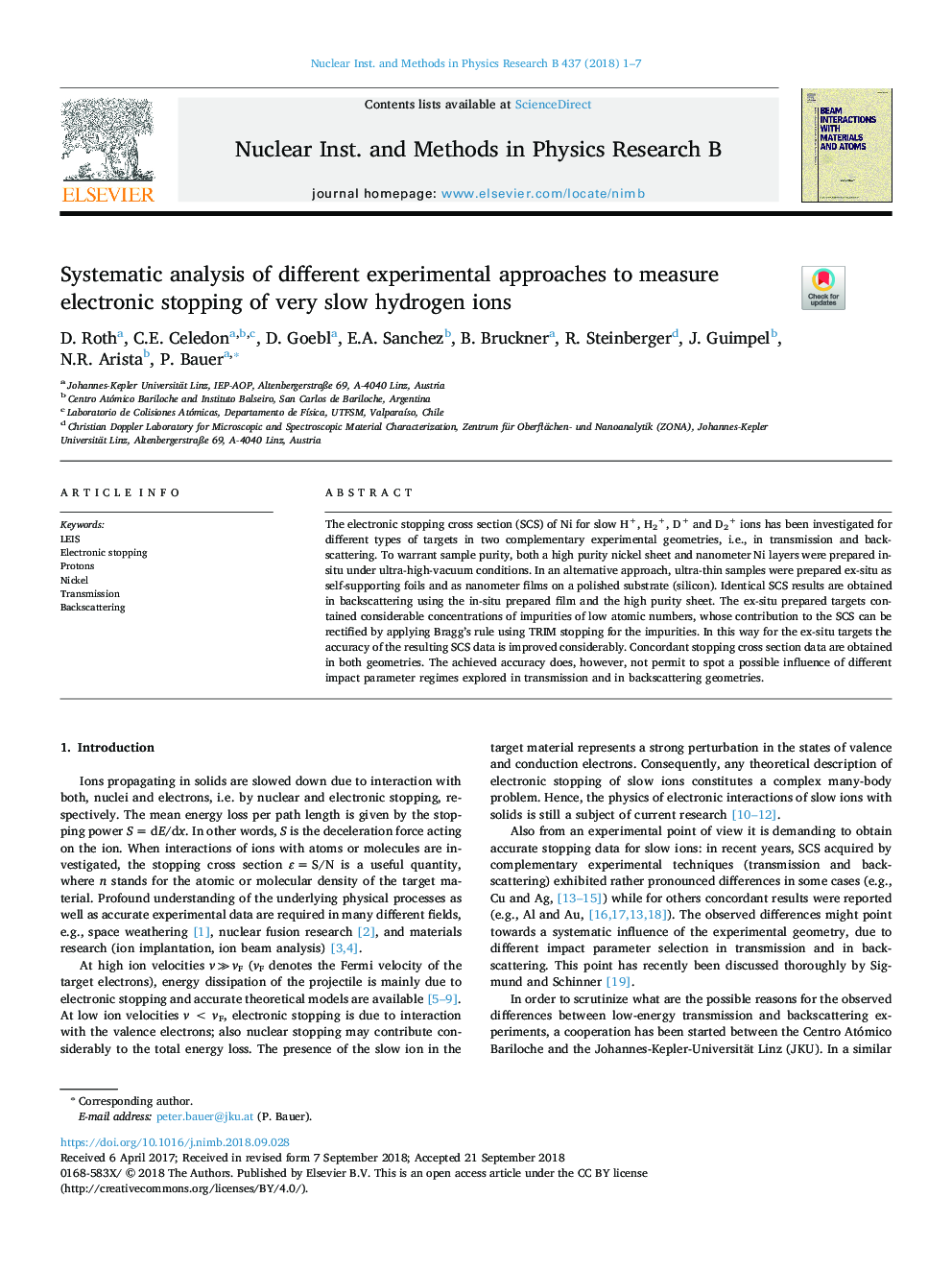| Article ID | Journal | Published Year | Pages | File Type |
|---|---|---|---|---|
| 12121920 | Nuclear Instruments and Methods in Physics Research Section B: Beam Interactions with Materials and Atoms | 2018 | 7 Pages |
Abstract
The electronic stopping cross section (SCS) of Ni for slow H+, H2+, D+ and D2+ ions has been investigated for different types of targets in two complementary experimental geometries, i.e., in transmission and backscattering. To warrant sample purity, both a high purity nickel sheet and nanometer Ni layers were prepared in-situ under ultra-high-vacuum conditions. In an alternative approach, ultra-thin samples were prepared ex-situ as self-supporting foils and as nanometer films on a polished substrate (silicon). Identical SCS results are obtained in backscattering using the in-situ prepared film and the high purity sheet. The ex-situ prepared targets contained considerable concentrations of impurities of low atomic numbers, whose contribution to the SCS can be rectified by applying Bragg's rule using TRIM stopping for the impurities. In this way for the ex-situ targets the accuracy of the resulting SCS data is improved considerably. Concordant stopping cross section data are obtained in both geometries. The achieved accuracy does, however, not permit to spot a possible influence of different impact parameter regimes explored in transmission and in backscattering geometries.
Related Topics
Physical Sciences and Engineering
Materials Science
Surfaces, Coatings and Films
Authors
D. Roth, C.E. Celedon, D. Goebl, E.A. Sanchez, B. Bruckner, R. Steinberger, J. Guimpel, N.R. Arista, P. Bauer,
